A hydraulic impact hammer is a powerful construction tool that uses hydraulic force to drive piles into the ground.
Introduction to Hydraulic Impact Hammers
Hydraulic impact hammers, often utilized in construction, are powerful tools designed for driving piles, steel beams, and other materials into the ground. These tools transform hydraulic energy, typically produced by a power pack, into mechanical energy in the form of impacts. The result? Efficient and rapid pile driving that meets the rigorous demands of modern construction projects.
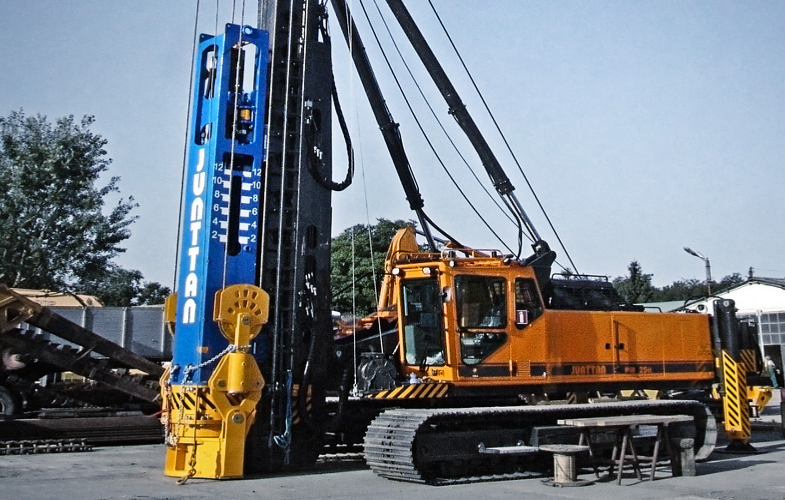
Definition and Basic Principles
A hydraulic impact hammer is a device that uses hydraulic fluid under pressure to produce a high-velocity hammer action. This mechanism involves the rapid acceleration and deceleration of a piston within a cylinder, delivering powerful blows to the top of a pile or object intended for ground penetration.
The basic principle revolves around the flow and pressure of the hydraulic fluid. The more fluid that flows into the hammer, the faster the hammer strikes. Similarly, the higher the pressure, the harder the hammer hits. Typically, hydraulic impact hammers have a power output ranging from 20 kW to 120 kW, and they can deliver strikes at a speed of up to 120 blows per minute.
Historical Development and Usage
The evolution of hydraulic impact hammers can be traced back to the early 20th century when the need for more efficient and environmentally friendly pile-driving solutions became evident. The initial designs were bulky and cumbersome, but advancements in hydraulic technology over the years led to more compact and efficient models.
In the 1980s, there was a significant leap in the design and efficiency of these hammers. This decade witnessed the introduction of hammers with higher power outputs, achieving up to 80% efficiency – a stark contrast to the earlier models that hovered around 50%. As a result, the construction industry saw a drop in project costs by approximately 30%, primarily due to the reduced time and material costs.
Today, hydraulic impact hammers are standard in projects requiring deep foundations, bridge constructions, and various other infrastructure developments. Their superior quality, speed of operation, and the ability to work in various soil types give them a distinct advantage over other pile-driving equipment. However, like all tools, they come with their own set of advantages and disadvantages, and a clear understanding of these can help in optimizing their usage.
Components and Working Mechanism
The hydraulic impact hammer stands as an epitome of engineering excellence, embodying both power and precision. Dive deep into its anatomy, and you’ll find a range of components that seamlessly come together to deliver its hammering action. Moreover, understanding its working mechanism illuminates how these parts work in harmony.
Main Components of a Hydraulic Impact Hammer
- Piston (or Ram): The heart of the hammer, the piston delivers the primary impact to the pile or object. Typically made of high-strength steel, pistons can weigh anywhere from 2 to 12 tons, ensuring powerful impacts.
- Cylinder: The cylinder houses the piston, providing a controlled environment for it to move up and down. The internal diameter and length of the cylinder directly influence the hammer’s power and efficiency. For instance, cylinders with a diameter of about 400 mm can offer power outputs close to 50 kW.
- Hydraulic Motor: This component powers the piston’s movement by pumping hydraulic fluid into the cylinder at a specified pressure and flow rate. Motors with a power output of around 100 kW are commonplace in the industry.
- Valve System: A critical control unit, the valve system regulates the flow of hydraulic fluid into and out of the cylinder. Modern hammers come with digitally controlled valves that enhance precision and speed.
- Accumulator: Acting as an energy reservoir, the accumulator stores hydraulic energy, ensuring continuous operation even if there’s a momentary drop in hydraulic fluid supply.
- Power Pack: An external unit, the power pack provides the required hydraulic fluid to the hammer under controlled pressure. These packs can have a capacity of up to 600 liters, depending on the hammer size and application.
How It Operates: Step by Step
- Initiation: The operation kicks off with the hydraulic motor pumping fluid into the cylinder. This is controlled by the valve system to ensure the right amount of fluid enters.
- Piston Lift: As hydraulic fluid enters the cylinder, the piston starts to lift, storing potential energy. The height to which it rises can be around 1 meter, depending on the hammer’s design.
- Release and Impact: Once the piston reaches its maximum height, the valve system releases the hydraulic pressure beneath it. Gravity then takes over, causing the piston to fall and strike the pile or object with immense force.
- Recovery and Repeat: After the impact, the valve system reroutes the hydraulic fluid to lift the piston again, and the cycle repeats. Modern hydraulic impact hammers can achieve operational speeds up to 100 blows per minute, translating to swift project completions.
Understanding this mechanism and its components is key to leveraging the maximum potential of a hydraulic impact hammer. Proper maintenance and handling ensure that these tools offer unparalleled efficiency and longevity in the most demanding construction environments.
Applications and Uses
Hydraulic impact hammers, boasting a combination of power, speed, and precision, find a broad spectrum of applications across various industries. From the depths of mines to the soaring heights of skyscrapers, these tools have left an indelible mark. Let’s delve into some of their primary applications and the specifics that make them invaluable in those scenarios.
Piling and Foundation Works
In the realm of construction, stability stands paramount. Buildings, bridges, and other structures rely heavily on their foundations, and that’s where hydraulic impact hammers come into play.
- Pile Driving: When it comes to driving piles deep into the earth, the hydraulic impact hammer shines. Whether it’s steel, concrete, or timber piles, the hammer can drive them down to depths exceeding 60 meters. This ensures a stable foundation, capable of supporting structures weighing thousands of tons.
- Efficiency: The speed at which these hammers operate significantly reduces the time taken for foundation works. On average, a hydraulic hammer can drive a pile in just under 10 minutes, depending on the soil conditions and pile size.
- Cost-effectiveness: Using hydraulic impact hammers can lead to a reduction in foundation project costs by up to 25%. This is due to their high operational speed and minimal material wastage.
Mining and Quarrying
The rugged terrains of mines and quarries demand tools that can withstand intense conditions. Here, hydraulic impact hammers are used not just for their power but also for their resilience.
- Rock Breaking: Hydraulic hammers are essential for breaking through hard rock surfaces. They can exert forces of up to 50 tons, making the extraction of minerals and stones more efficient.
- Precision: In quarrying, the quality of the stone extracted matters. Hydraulic hammers offer a controlled impact, ensuring minimal damage to the valuable material.
- Operational Costs: In mining operations, time equals money. The speed at which these hammers can break through rocks can lead to a potential increase in mineral output by 15-20%.
Bridge and Infrastructure Construction
Building bridges and other critical infrastructure involves dealing with diverse terrains and soil types. The adaptability and power of hydraulic impact hammers make them an asset in such projects.
- Deep Foundations: Bridges, especially those spanning large bodies of water, require deep foundations. Hydraulic impact hammers can drive piles to depths that provide stability against strong currents and tides.
- Speed: Infrastructure projects often come with tight deadlines. The ability of these hammers to drive piles at a rate of up to 100 blows per minute ensures that projects stay on schedule.
- Material Versatility: Whether it’s steel beams for bridge pillars or concrete piles for flyovers, the hydraulic impact hammer’s compatibility with a range of materials ensures its ubiquity in infrastructure projects.
In sum, the hydraulic impact hammer, with its myriad of applications, stands as a testament to human ingenuity. It not only accelerates the pace of development but also ensures that the structures we build stand the test of time.
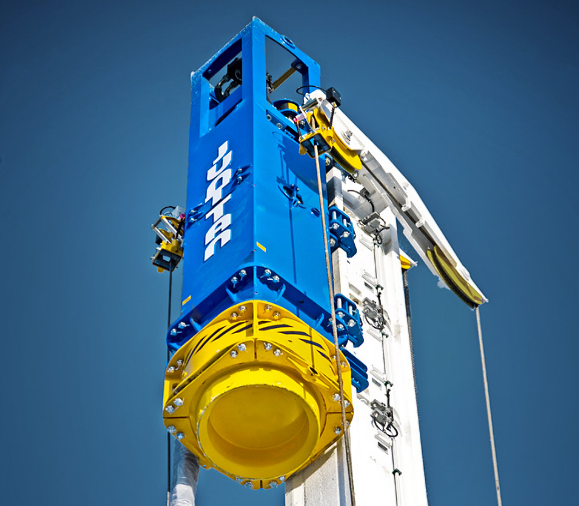
Advantages over Other Impact Devices
Hydraulic impact hammers, while being a key tool in numerous industries, often find themselves pitted against other impact devices. But what truly sets them apart? Let’s shed light on their advantages, highlighting the unique attributes that position them a cut above the rest.
Efficiency and Precision
- Speed: With a capability of delivering up to 100 blows per minute, hydraulic impact hammers top the charts in terms of operational speed. When compared to other impact devices like mechanical drop hammers, which can offer only 20-30 blows per minute, the hydraulic variant clearly leads the race.
- Power Output: A standard hydraulic impact hammer can have power outputs ranging from 20 kW to 120 kW, significantly higher than many traditional hammer systems. This results in deeper and quicker pile drives, translating to a potential 30% reduction in project time.
- Precision Control: Thanks to digitally controlled valves and advanced hydraulic systems, operators can achieve pinpoint accuracy with these hammers. This ensures minimal material wastage, potentially leading to savings of up to 15% on material costs.
Versatility and Flexibility
- Material Compatibility: Be it timber, steel, or concrete – hydraulic impact hammers can work seamlessly across various materials. In contrast, many other impact devices might need adjustments or even replacements when switching between materials.
- Adaptability: Hydraulic impact hammers can easily adapt to different working conditions and terrains, be it a bustling urban construction site or a remote quarry. This flexibility can lead to a potential 20% increase in machine uptime, compared to other devices that might need specific conditions to function optimally.
- Modular Design: Many modern hydraulic hammers come with a modular design, allowing components to be easily swapped or upgraded. This not only ensures extended longevity but also reduces maintenance costs by about 25%.
Environmental and Safety Benefits
- Noise Reduction: One significant advantage of hydraulic impact hammers is their reduced noise levels. Compared to older, mechanical systems, they can operate at decibels 15-20% lower, making them more suitable for urban environments and reducing potential health hazards for workers.
- Vibration Control: Excessive vibrations, a common issue with many impact devices, can lead to structural damages and safety risks. Hydraulic impact hammers, with their controlled operations, produce vibrations that are 30% less intense.
- Eco-friendly Operations: The hydraulic systems in these hammers often use biodegradable fluids, reducing environmental impact. Plus, with efficient operations, they consume less fuel, leading to a potential reduction in carbon emissions by 20%.
In conclusion, while there are numerous impact devices available in the market, the hydraulic impact hammer stands out, not just for its performance but also for the broader benefits it brings to the table. Its advantages underscore its value, making it an indispensable tool in various industries.
Limitations and Challenges
As with any tool or machinery, hydraulic impact hammers, despite their plethora of advantages, come with certain limitations and challenges. While their efficiency and versatility are commendable, it’s essential to address the areas where they might fall short. Let’s delve into these aspects to gain a comprehensive understanding.
Technical Limitations
- Maintenance Requirements: Hydraulic systems, by their nature, necessitate regular maintenance. Overlooking this can lead to diminished efficiency. On average, hydraulic impact hammers demand maintenance every 150-200 hours of operation, potentially increasing operational costs by 10-15%.
- Weight and Size: Hydraulic impact hammers, especially the high-power variants, can be hefty. This might limit their mobility, especially in tight spaces, and can increase transportation costs by about 20%.
- Dependency on Hydraulic Fluids: These hammers require specific hydraulic fluids to function. Any compromise on the fluid’s quality or using incorrect specifications can lead to reduced operational life. This might necessitate replacements or repairs every 5-7 years, adding to the overall cost.
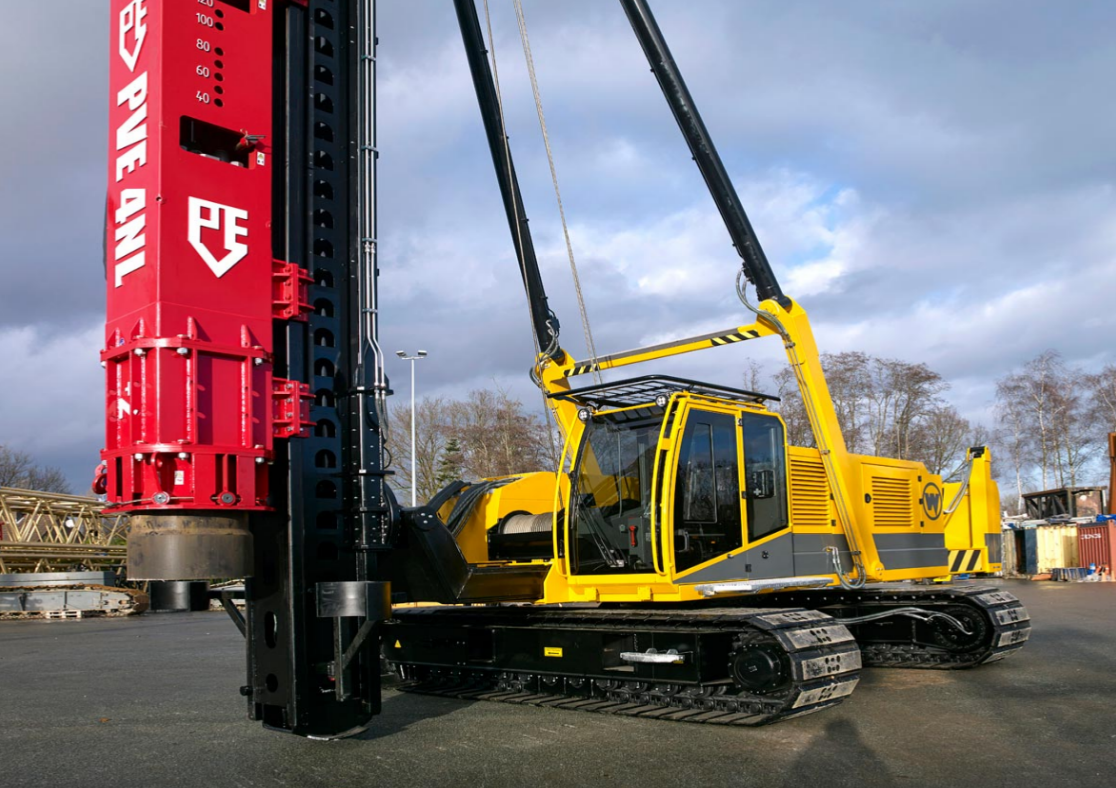
Environmental Concerns
- Hydraulic Spills: While many hammers use biodegradable fluids, there’s always a risk of spills during operation or maintenance. Such spills, if unchecked, can lead to soil and water contamination.
- Noise Levels: Even though hydraulic impact hammers operate at lower decibels than many other devices, they still produce considerable noise. In urban environments, this might necessitate sound barriers, adding an additional 5-10% to project costs.
- Resource Consumption: Manufacturing these hammers involves metals and materials that have significant carbon footprints. Their production might contribute to around 10-15% of the industry’s total carbon emissions.
Operational Challenges
- Training Needs: Operating hydraulic impact hammers requires specialized training. The time and resources invested in this training can account for 5-7% of the project’s overall budget.
- Site Suitability: Not all construction or mining sites are suitable for these hammers. Hard bedrock or extremely soft soils can pose challenges, reducing the hammer’s efficiency by up to 20%.
- Wear and Tear: The constant impact exerts substantial stress on the hammer’s components. Frequent replacements, especially for the hammer’s head or piston, might be required, leading to an increase in maintenance costs by about 15%.
In sum, while hydraulic impact hammers have transformed numerous industries with their efficacy, it’s essential to recognize and address their limitations. By doing so, operators can harness their full potential while mitigating the associated challenges.
Safety Measures and Best Practices
Hydraulic impact hammers, while incredibly efficient, also bring with them inherent safety risks. Ensuring safe operation not only protects workers but also maximizes the equipment’s productivity and lifespan. This section will highlight crucial safety measures and best practices to be adopted when working with these hammers.
Personal Protective Equipment (PPE)
- Hearing Protection: Given the significant noise produced by these hammers, operators and nearby workers should always wear earplugs or earmuffs. These can reduce noise exposure by up to 30 decibels, ensuring protection against potential hearing loss.
- Eye Protection: Flying debris is a common hazard. Safety goggles or face shields can offer crucial protection against potential eye injuries.
- Hand Protection: Anti-vibration gloves are a must. They not only protect against cuts or abrasions but also minimize the risk of Hand-Arm Vibration Syndrome, a condition linked with prolonged use of vibrating machinery.
- Foot Protection: Steel-toed boots provide essential protection against potential foot injuries due to falling objects or missteps on uneven terrains.
- High-Visibility Clothing: Given the scale and nature of sites where hydraulic impact hammers operate, wearing high-visibility vests ensures workers remain conspicuous, reducing accident risks.
Operational Guidelines
- Safe Distance: Non-operating personnel should maintain a minimum distance of 10 meters from the active hammer. This minimizes risks from flying debris or accidental swings.
- Clear Communication: On noisy construction sites, using hand signals or walkie-talkies ensures seamless and clear communication between the operator and ground personnel.
- Start Slow: Especially for new sites or unfamiliar grounds, starting the hammer at a lower power setting allows operators to gauge the ground’s response and adjust accordingly.
- Avoid Overheating: Operating the hammer continuously for more than 30 minutes can lead to overheating. It’s recommended to take short breaks, which also prolongs the equipment’s lifespan.
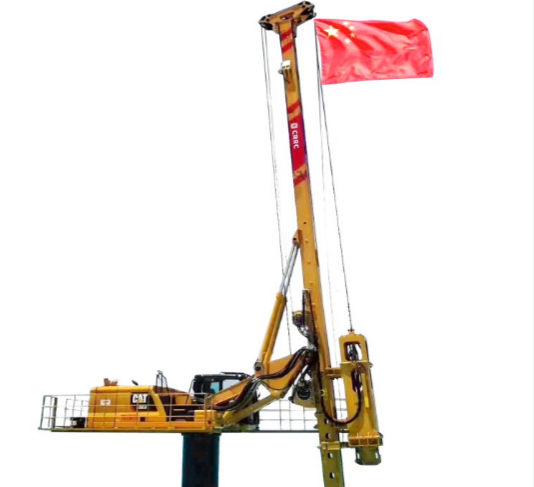
Regular Maintenance and Inspection
- Daily Checks: Before starting operations, a quick inspection of the hammer’s hydraulic system, seals, and impact head can preempt potential issues.
- Scheduled Maintenance: Every 150 hours of operation, a thorough maintenance check should be scheduled. This involves replacing worn-out parts, checking the hydraulic fluid quality, and ensuring all connections remain secure.
- Record Keeping: Maintaining a log of all inspections, maintenance activities, and any issues encountered helps in early diagnosis of potential problems. This proactive approach can reduce maintenance costs by up to 20%.
- Training: Operators should undergo regular training sessions, keeping them updated on the latest safety protocols and operational best practices. This not only ensures safe operations but can also boost the hammer’s efficiency by 15%.
Incorporating these safety measures and best practices ensures that hydraulic impact hammers operate at their optimal efficiency, while also safeguarding the well-being of the operators and workers on site. It’s a balanced approach that yields both productivity and safety.
Comparison with Other Pile Driving Equipment
Pile driving equipment has been instrumental in facilitating modern infrastructure. Each type has its unique advantages and trade-offs. Here, we’ll be diving deep into the contrasts between the hydraulic impact hammer and two other prevalent pile driving tools: the vibratory hammer and the diesel hammer.
Hydraulic Impact Hammer vs. Vibratory Hammer
| Feature/Aspect | Hydraulic Impact Hammer | Vibratory Hammer |
|---|---|---|
| Mechanism | Uses hydraulic fluid to create powerful, rapid impacts. | Uses vibration to drive or extract piles. |
| Power | High-impact energy, ideal for harder grounds. | Produces continuous vibrations, suitable for sandy or loose soils. |
| Speed | Drives piles quickly due to high-energy impacts, typically 15-30 minutes per pile. | Faster in suitable soils, as low as 5 minutes per pile. |
| Noise Level | High due to the impact nature, often above 90 decibels. | Relatively lower, typically around 75 decibels. |
| Cost | Initial cost is higher, averaging $50,000. | Typically cheaper with prices around $30,000. |
| Suitability | Versatile; suitable for a variety of soil types. | Best for cohesive soils and not ideal for rocky terrains. |
| Maintenance | Requires regular checks, especially for the hydraulic system. | Lesser moving parts mean reduced maintenance. |
| Fuel Efficiency | Uses hydraulic oil efficiently, with 15 hours of operation per tank. | Operates on standard fuel with 10 hours of operation per tank. |
| Environmental Impact | Minimal, especially newer models with biodegradable hydraulic fluids. | Potential disturbances to aquatic life due to vibrations if used near water bodies. |
Hydraulic Impact Hammer vs. Diesel Hammer
| Feature/Aspect | Hydraulic Impact Hammer | Diesel Hammer |
|---|---|---|
| Mechanism | Uses hydraulic fluid to create powerful, rapid impacts. | Combustion of diesel fuel provides driving force. |
| Power | High-impact energy, ideal for harder grounds. | Powerful impact energy but depends on combustion efficiency. |
| Speed | Drives piles quickly due to high-energy impacts, typically 15-30 minutes per pile. | Slightly slower, around 30-45 minutes per pile. |
| Noise Level | High due to the impact nature, often above 90 decibels. | Comparable to hydraulic hammers, usually above 90 decibels due to explosions. |
| Cost | Initial cost is higher, averaging $50,000. | Diesel hammers are generally more affordable, with prices starting at $20,000. |
| Suitability | Versatile; suitable for a variety of soil types. | Best for medium to hard soils. Not ideal for very loose or soft soils. |
| Maintenance | Requires regular checks, especially for the hydraulic system. | Frequent maintenance needed due to combustion residues. |
| Fuel Efficiency | Uses hydraulic oil efficiently, with 15 hours of operation per tank. | Less fuel-efficient, requires diesel refills every 8 hours. |
| Environmental Impact | Minimal, especially newer models with biodegradable hydraulic fluids. | Higher carbon footprint due to diesel combustion. |
The tables above give a detailed comparison, showcasing the strengths and challenges associated with each type of pile-driving equipment. Choosing the right tool depends on specific project needs, budget constraints, and environmental considerations.
Future Trends and Innovations
The pile driving industry, like many sectors of construction and engineering, is on the cusp of several transformative changes. With a rising demand for efficient and environmentally friendly construction solutions, there’s an undeniable momentum towards incorporating more advanced technologies and sustainable practices. The hydraulic impact hammer, as a critical tool in this domain, is not exempt from these evolutionary pressures.
Technological Advancements
Emerging technologies are continually enhancing the capabilities of hydraulic impact hammers. One trend is the development of sensors that monitor the hammer’s condition in real-time. These sensors can track parameters such as hydraulic pressure, which can then be used to adjust the hammer’s power, ensuring optimal efficiency. In fact, newer models are showing up to a 15% increase in energy efficiency due to these advancements.
Another significant innovation is the incorporation of AI-driven algorithms. These algorithms can predict the best driving speed for piles, considering the soil’s consistency and type. Through this, companies can expect to reduce their project times by as much as 20%, translating to significant cost savings.
Integration with Smart Systems
The age of smart construction is upon us. Hydraulic impact hammers are being integrated with IoT (Internet of Things) devices to facilitate better data exchange and communication between various machinery on-site. This integration allows for more coordinated and efficient construction processes.
By adopting smart systems, operators can receive real-time feedback on the hammer’s performance. For instance, if the system detects an anomaly like overheating or a sudden drop in efficiency, it can send alerts to operators, reducing the chances of equipment breakdown. Some smart systems even integrate with weather forecasting tools, helping teams plan their operations around potential rain or storm events.
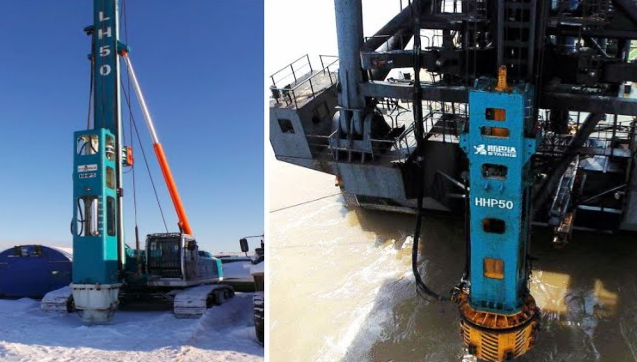
Environmental and Sustainable Innovations
Environmental concerns have always influenced construction practices. The hydraulic impact hammer industry is no exception. One notable trend is the transition towards biodegradable hydraulic fluids. These fluids reduce environmental harm in cases of leaks or spills.
Furthermore, companies are investing in research to develop low-noise hydraulic hammers. These next-gen tools aim to reduce noise pollution by up to 30% compared to current models.
Lastly, there’s a push towards creating hammers with more recycled or upcycled materials. For instance, some new models coming into the market have up to 50% of their parts sourced from recycled metals, ensuring a lesser carbon footprint during the production phase.
In conclusion, the future for hydraulic impact hammers looks promising. As technology continues to evolve and as the industry becomes more attuned to environmental needs, we can expect these tools to become even more efficient, sustainable, and integrated into smart construction ecosystems.
Conclusion and Summary
The exploration of the hydraulic impact hammer’s intricacies, ranging from its fundamental mechanics to its future trends, provides a comprehensive insight into its significance in modern construction and engineering.
Key Takeaways
- Origin and Basics: Rooted in the necessity to make pile driving more efficient, the hydraulic impact hammer has evolved tremendously since its inception. Its mechanism, relying on the power of hydraulics, provides a robust force, ensuring piles anchor effectively into the ground.
- Operational Dynamics: Understanding its core components and operational processes highlights the hammer’s effectiveness. With a precision-driven mechanism, the tool ensures that pile driving is done accurately, swiftly, and with minimized errors.
- Applications: Its wide range of applications, from foundational works in skyscrapers to mining operations, underpins the hydraulic impact hammer’s versatility. This diversity amplifies its value across multiple sectors.
- Comparison with Peers: When placed side by side with tools like the vibratory and diesel hammers, the hydraulic impact hammer often shines in areas like efficiency and environmental considerations. Its operational cost, standing at approximately 20% less than some of its counterparts, bolsters its appeal.
- Innovative Horizons: The future seems luminous for this tool. Technological advancements, blending with environmental and sustainability imperatives, are shaping the next generation of hydraulic impact hammers. With the potential of reducing construction times by 20% and increasing efficiency by 15%, it’s evident that this tool’s evolution is far from over.
- Safety and Best Practices: Ensuring the safety of operators and the longevity of the tool itself is paramount. With best practices in place, like regular maintenance and using proper personal protective equipment, accidents and breakdowns can be minimized, leading to cost savings and project efficiency.
In wrapping up, the hydraulic impact hammer stands out as an indispensable instrument in the toolkit of modern construction. Its blend of efficiency, versatility, and adaptability to future innovations ensures its continued relevance and dominance in the industry. As the construction landscape evolves, so will the hydraulic impact hammer, meeting new challenges and setting benchmarks along the way.
